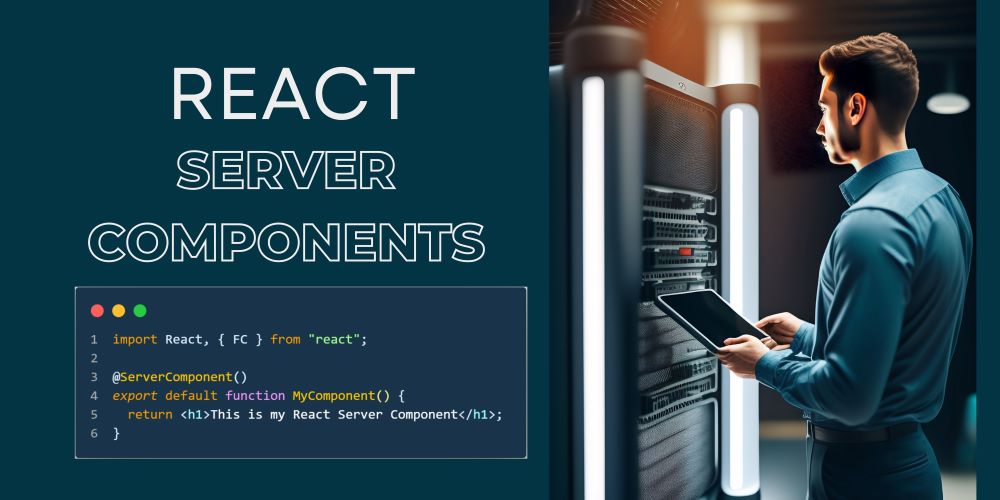- Introduction
- Efficiency
- User Experience
- Agility
- Data-Driven Decision-Making
- Collaboration
- Example
- Conclusion
Introduction
In today’s fast-paced digital world, product development teams are constantly looking for efficient, user-centric, and agile approaches. Enter Lean Frontend, a methodology that prioritizes building only what is necessary and focuses on delivering value to users.
In this blog post, we will explore why Lean Frontend is the smart choice for modern product development. Join us as we delve into the advantages of adopting a Lean Frontend approach for your next project.
Efficiency
Lean Frontend is a methodology that emphasizes efficiency in product development. Here’s how it can reduce development time and costs:
- Minimalistic approach: Lean Frontend focuses on building only what is necessary to solve user problems, avoiding unnecessary features or functionalities. This minimizes development time and costs by streamlining the development process and reducing unnecessary work.
- Rapid prototyping: Lean Frontend encourages rapid prototyping and testing with real users to quickly validate assumptions and gather feedback. This iterative approach helps identify and address issues early in the development cycle, saving time and costs associated with fixing problems later on.
- Lean mindset: Lean Frontend promotes a culture of continuous improvement and waste elimination. Teams are encouraged to identify and eliminate non-value-added activities, resulting in a more efficient and streamlined development process.
- Agile methodologies: Lean Frontend often integrates with Agile methodologies such as Scrum or Kanban, which emphasize iterative development, cross-functional collaboration, and frequent feedback loops. These methodologies can help reduce development time and costs by promoting efficient teamwork and adaptive planning.
Examples of Companies Successfully Used Lean Frontend:
- Dropbox simplified their file-sharing product using Lean Frontend, resulting in a more efficient and user-friendly experience.
- Airbnb streamlined their booking process with Lean Frontend through iterative UI testing.
- Buffer improved their social media management tool with Lean Frontend, based on continuous user feedback.
User Experience
Lean Frontend is a user-centric approach that prioritizes delivering a better user experience. Here’s how it can lead to an improved user experience:
- User-centric approach: Lean Frontend prioritizes understanding user problems and needs through techniques such as user research and testing. This ensures that the product is designed with the user in mind, resulting in a better overall user experience.
- Value-driven development: Lean Frontend focuses on delivering value to users by solving their problems and avoiding unnecessary features. This approach ensures that the product addresses user needs and creates a positive experience.
- Rapid iteration and feedback loops: Lean Frontend encourages rapid prototyping, testing, and feedback loops with users. This iterative approach allows teams to continuously learn from user feedback and make necessary improvements to the product.
- Usability and accessibility focus: Lean Frontend emphasizes usability and accessibility as key components of user experience. Teams are encouraged to design products that are easy to use, intuitive, and accessible to all users, including those with disabilities.
Agility
Lean Frontend enables teams to be more flexible and agile in their product development process. Here’s how:
- Quick iterations: Prioritizes rapid prototyping and testing, enabling quick product improvements based on user feedback, market trends, and changing needs.
- Data-driven decision-making: Relies on data to inform product development decisions, ensuring informed choices based on actual user behavior and market trends.
- Cross-functional collaboration: Promotes collaboration across different team members’ skills and perspectives, fostering agility and effective decision-making.
- Lean mindset: Encourages a continuous improvement mindset, eliminating waste and increasing efficiency for increased agility and adaptability.
Data-Driven Decision-Making
Lean Frontend enables teams to gather more data on user behavior and preferences through its iterative approach. Here’s how:
- Continuous user feedback: Lean Frontend encourages teams to continuously collect feedback from users through techniques such as usability testing, surveys, and analytics. This ongoing feedback loop provides valuable data on how users interact with the product, their preferences, and pain points.
- A/B testing: Lean Frontend promotes A/B testing, where teams can test different versions of a feature or functionality with real users to gather data on their preferences and behavior. This data helps inform decisions about which version performs better and should be further developed.
- User analytics: Lean Frontend advocates for using user analytics tools to track user behavior, such as how users navigate through the product, which features they use the most, and where they drop off. This data provides insights into user preferences and helps teams make informed decisions about what features and functionality to prioritize in future development.
By leveraging data on user behavior and preferences, Lean Frontend enables teams to make informed decisions about what features and functionality to build in the future, based on actual user needs and preferences, rather than assumptions or guesses.
Collaboration
Lean Frontend encourages collaboration and cross-functional teamwork, which leads to better products and a more efficient development process. Here’s how:
- Cross-functional collaboration: Lean Frontend brings together team members from different disciplines, such as design, development, and product management, to collaborate and work towards a common goal. This cross-functional collaboration ensures that all perspectives are considered and that the product is designed and built with a holistic approach.
- Open communication: Lean Frontend promotes open communication among team members, encouraging regular communication, feedback, and knowledge sharing. This fosters a collaborative environment where team members can share ideas, provide input, and learn from each other, leading to better decision-making and problem-solving.
- Agile methodologies: Lean Frontend often incorporates Agile methodologies, such as Scrum or Kanban, which emphasize teamwork, collaboration, and iterative development. These methodologies promote regular team meetings, frequent feedback, and collaboration across roles and functions, leading to a more efficient and effective development process.
By encouraging collaboration and cross-functional teamwork, Lean Frontend promotes a collaborative and efficient environment that leads to better products and a more streamlined development process.
code examples that showcase the principles of Lean Frontend
1) Rapid Prototyping: Using a prototyping tool like Figma or Sketch, a frontend team can quickly create interactive mockups of user interfaces to gather feedback and validate design decisions before diving into full-fledged development.
<!-- HTML for a basic login form --> <form> <input type="text" placeholder="Username"> <input type="password" placeholder="Password"> <button type="submit">Login</button> </form>
2) Minimum Viable Product (MVP): Developing an MVP with minimal features and functionality to quickly launch and test the product in the market. This allows the team to gather user feedback and iterate on the product based on actual user needs
// JavaScript code for a basic todo list app
class TodoList {
constructor() {
this.todos = [];
}
addTodo(todo) {
this.todos.push(todo);
}
removeTodo(todoId) {
this.todos = this.todos.filter(todo => todo.id !== todoId);
}
displayTodos() {
this.todos.forEach(todo => console.log(todo.text));
}
}
const todoList = new TodoList();
todoList.addTodo({ id: 1, text: "Finish homework" });
todoList.addTodo({ id: 2, text: "Buy groceries" });
todoList.displayTodos();
3) Iterative Development: Using an iterative development approach, where the frontend team continuously develops, tests, and iterates on small increments of the product, based on user feedback and priorities.
/* CSS code for a simple navigation menu */
.navbar {
display: flex;
justify-content: space-between;
align-items: center;
padding: 16px;
background-color: #f8f8f8;
}
.navbar-logo {
font-size: 24px;
color: #333;
}
.navbar-links {
display: flex;
gap: 8px;
}
.navbar-link {
color: #777;
text-decoration: none;
}
.navbar-link:hover {
color: #000;
}
4) Continuous Integration/Continuous Deployment (CI/CD): Implementing CI/CD practices to automate the frontend build, testing, and deployment processes, allowing for faster and more reliable deployments.
# Configuration file for a CI/CD pipeline using a tool like Jenkins or GitLab CI
stages:
- build
- test
- deploy
build:
stage: build
script:
- npm install
- npm run build
test:
stage: test
script:
- npm run test
deploy:
stage: deploy
script:
- npm run deploy
5) User-centered Design: Focus on solving user problems and creating value for users through the design and development process. Gather user feedback, conduct usability testing, and iterate on the product based on user needs and preferences.
6) Collaborative Development: Encourage collaboration and cross-functional teamwork among frontend and backend developers, designers, and other stakeholders. Use tools like version control systems (e.g., Git), project management software (e.g., Jira), and communication platforms (e.g., Slack) to facilitate effective collaboration and communication.
These are just a few examples of how Lean Frontend principles can be implemented in actual code to create efficient, user-focused, and collaborative frontend development processes. The specific implementation may vary depending on the technology stack, tools, and frameworks used by the team.
Conclusion
In conclusion, Lean Frontend is a smart approach to frontend development that prioritizes efficiency, user experience, agility, data-driven decision-making, and collaboration. By adopting Lean Frontend, teams can deliver better products faster, based on user feedback and market trends. Consider implementing Lean Frontend in your projects for improved frontend development outcomes.
For more on React and complex user interfaces, check out my post on micro-frontend architecture.
I explored breaking down large frontends into smaller, manageable pieces with React and modern tech.
Check it out here: Micro Frontend Architecture Overview





I am now not positive where you’re getting your information, however great topic. I must spend some time finding out much more or figuring out more. Thank you for wonderful info I used to be in search of this info for my mission.
It is in point of fact a nice and helpful piece of info. I am glad that you just shared this useful information with us. Please stay us informed like this. Thank you for sharing.